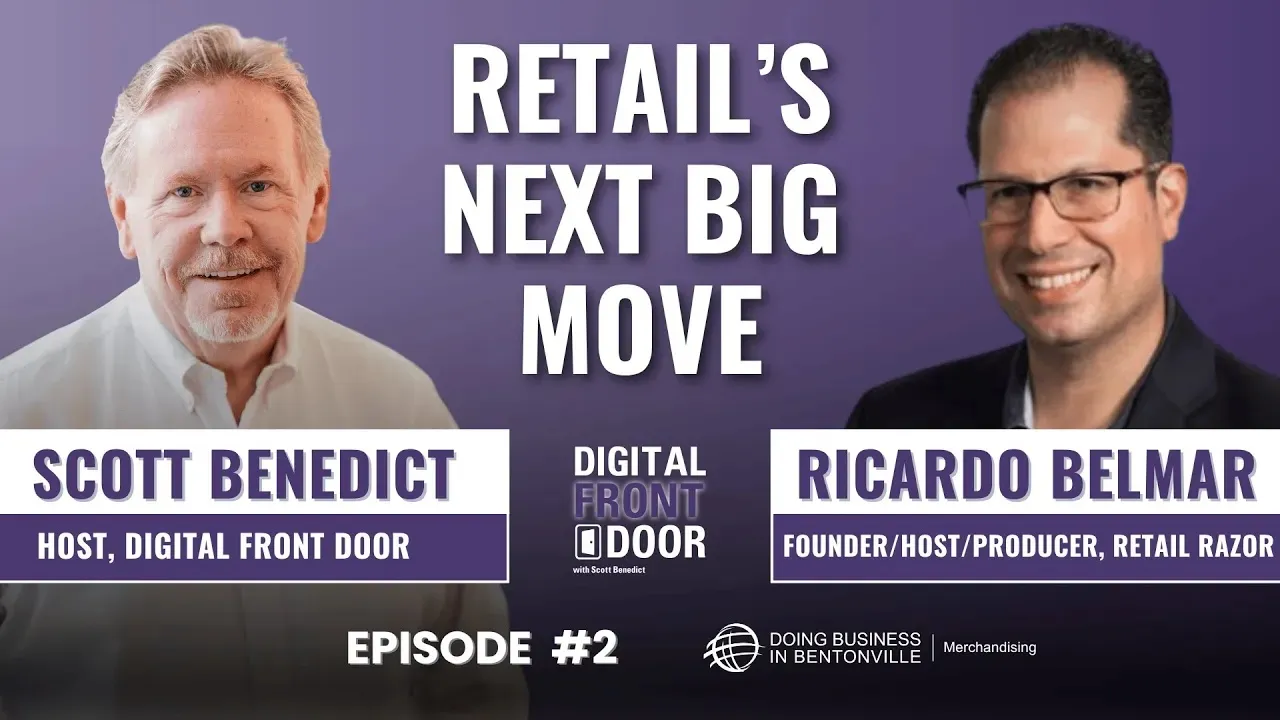The wholesale club industry stands as one of retail's most fascinating success stories. Despite economic fluctuations and retail disruption, Costco, Sam's Club, and BJ's Wholesale Club continue to thrive through their unique business models and evolving strategies.
Michael Clayman, publisher of Warehouse Club Focus, who has spent nearly three decades analyzing and documenting the wholesale club industry, reveals the four pillars that have sustained wholesale clubs: consistently low prices that justify membership fees, superior product quality, membership revenue that flows directly to the bottom line, and the "treasure hunt" merchandising strategy that keeps members coming back regularly. These elements existed before COVID-19, but the pandemic accelerated growth as clubs remained open during lockdowns and became trusted resources for essential items.
Each operator has carved out a distinctive competitive position. BJ's operates at higher margins (16.5%) compared to Costco and Sam's Club (both around 11%), positioning itself between traditional warehouse clubs and grocery stores. This allows BJ's to remain price-competitive on branded items while generating higher margins elsewhere, particularly through private label products. Sam's Club differentiates through technology and convenience with Scan & Go shopping, pizza delivery, curbside pickup, and home delivery handled by their own employees rather than third parties. Meanwhile, Costco maintains unwavering margin discipline, proving that low prices drive massive sales volume – their average annual sales per location have doubled over 15 years to approximately $260 million.
The analysis also explores how all three chains have decreased their focus on business members over time, finding consumer items generate higher sales volumes. We examine PriceSmart's successful international expansion across Central America, Latin America, and the Caribbean, achieving remarkable productivity despite smaller store footprints by following the same low-price, high-quality formula.
For suppliers aiming to succeed in this channel, Clayman offers crucial advice: visit the clubs frequently to observe merchandising innovations across all departments and never underestimate their relentless focus on maintaining low prices, which remains the foundation of their business model regardless of other strategic initiatives.
More About this Episode
Inside the Club: Why Wholesale Clubs Are Winning the Value Game in Retail
The wholesale club industry continues to thrive as one of the most dynamic and resilient channels in retail today. While broader retail faces the headwinds of inflation, rising operational costs, and ever-evolving consumer expectations, wholesale clubs like Costco, Sam’s Club, BJ’s Wholesale, and PriceSmart are doubling down on the fundamentals, and it is working.
What makes this segment of retail so enduring, even amidst constant change? The answer lies in a mix of price leadership, value perception, disciplined margin management, and strategic use of both technology and real estate. Below, we will unpack what is fueling the success of these club operators and what it all means for the future of the format.
Price First, Always: The Engine Behind the Club Model
At its core, the wholesale club model is about saving customers money, a promise that begins with a paid membership and ends at the register with deeply competitive prices. As Michael Clayman, publisher of Warehouse Club Focus, explained, price leadership is not just a strategy for club operators; it is their entire reason for existing.
Members expect that paying a fee to shop at these clubs comes with tangible savings. If that value equation falters, the business model collapses. That is why all major club retailers, Costco, Sam’s Club, BJ’s, and PriceSmart, continue to anchor their strategies around delivering real, measurable value to members.
However, price alone no longer wins the game. Quality is equally critical.
Beyond Price: Quality, Efficiency, and the Treasure Hunt
The clubs have evolved from bare-bones operations to high-quality retail experiences. Costco, in particular, has driven this transformation with an unwavering commitment to offering top-tier products at low prices. BJ’s and Sam’s have followed suit to varying degrees, but all three now view quality as a key differentiator.
Another important component is the famed “treasure hunt.” About 25 to 35 percent of club assortments rotate frequently, giving members the thrill of discovering something new during each visit. These rotational SKUs enhance perceived variety without actually expanding the overall SKU count. It is a savvy approach that adds engagement and boosts discretionary spending.
The Pandemic Effect: Trust Earned, Loyalty Cemented
While these foundational pillars existed long before 2020, the pandemic acted as an accelerant.
Wholesale clubs were declared essential and remained open throughout lockdowns. More importantly, they were able to consistently supply in-demand products, earning a new level of consumer trust. In uncertain times, members found reassurance in the reliable presence of BJ’s, Sam’s, and Costco.
That goodwill translated into membership growth and increased visit frequency, trends that have largely continued post-pandemic. As inflation has taken center stage in retail, the perceived and real value offered by clubs has only become more compelling.
BJ’s: A Nuanced Strategy Focused on Grocery, Private Label, and Margins
BJ’s Wholesale Club has carved out a unique middle ground in the club space, strategically positioning itself closer to grocery and mass retailers than its club peers.
What is especially notable is BJ’s willingness to carry higher margins. Their gross margin rates are roughly 500 basis points above Costco and Sam’s. This is not about gouging customers. Instead, BJ’s appears to strike a balance between competitive pricing on branded items and higher-margin private label or unique SKUs not stocked by other clubs.
Their push into private brands and digital services, such as curbside pickup and delivery, also reflects a more nuanced value proposition. BJ’s is not just chasing Costco and Sam’s; it is offering something different, especially to suburban grocery shoppers who might otherwise default to Walmart or Kroger.
Sam’s Club: Leaning Into Omnichannel and Tech-Led Convenience
Sam’s Club, backed by the vast infrastructure of Walmart, is betting heavily on convenience, technology, and omnichannel integration.
From Scan & Go checkout to automated receipt verification via RFID arches at exits, Sam’s is arguably leading the club industry in operational technology. They have also launched their own in-house delivery service, eliminating the need for third-party partners and improving last-mile execution.
However, convenience comes at a cost. As Clayman points out, Sam’s margin for error depends on whether Walmart is willing to support the added operational expense that comes with omnichannel investments. If the incremental cost can be offset with margin or volume, Sam’s may have found the winning formula for the modern club experience.
What sets Sam’s apart is not just its digital infrastructure, but also a clear strategic focus on the business customer segment. While all clubs have leaned more into consumer sales over the years, Sam’s still leads in business-oriented categories like janitorial and automotive. This could be a smart move as inflation squeezes small business budgets.
Costco: Discipline, Discipline, Discipline
If there is one word that defines Costco’s strategy, it is discipline.
Costco maintains gross margins around 11 percent, and they have not budged in over a decade. This is not by accident. It is a core belief system: low margins = low prices = high volume = efficiency gains = profit. The data supports this. Over the past 15 years, sales per warehouse have doubled while SKU counts and operating costs per dollar of sales have remained tightly controlled.
With an average of just 3,300 SKUs per building, compared to over 5,200 at BJ’s and over 3,500 at Sam’s, Costco is laser-focused on curation. This enables better buying power, faster turnover, and lower inventory management costs. The result is best-in-class productivity.
From a supplier standpoint, that means Costco is challenging to break into but can deliver massive volume if the product and packaging meet their standards.
SKU Strategy: Less Is More, But BJ’s Plays the Long Game
All club operators have trimmed their SKU counts over the years. Costco is the most aggressive here, using space and simplicity to drive volume. Sam’s sits in the middle. BJ’s carries the most SKUs per location, often due to its greater emphasis on grocery and consumer staples.
However, building size limits SKU expansion. BJ’s buildings average around 110,000 square feet, while Costco’s reach up to 165,000. That constraint forces BJ’s to be strategic, especially if they want to maintain their private label initiatives and build out rotating treasure hunt assortments. Still, BJ’s more expansive selection could be a competitive differentiator.
International Expansion: PriceSmart’s Quiet Power Play
While Costco and Sam’s have begun to make international inroads, PriceSmart is showing how the club model can thrive in emerging markets.
PriceSmart operates similarly to Costco, with a focus on low prices, quality, and driving sales, but in a smaller footprint. With locations across Central America, Latin America, and the Caribbean, the company has adapted the warehouse club model to fit its smaller 50,000-square-foot buildings.
The secret is a lean model, tight SKU counts, and a leadership team rooted in the Price Club lineage. With Colombia now its biggest market, PriceSmart’s runway for growth is long, and its model could serve as a blueprint for future international expansion.
What It Means for Suppliers: Price, Packaging, and Presence
For brands and vendors looking to break into the club channel, the playbook is clear:
- Walk the clubs regularly. Do not just examine your category; walk every aisle. Innovation and packaging inspiration often come from unexpected places.
- Understand the difference between cost and value. Clubs do not just want the lowest cost product. They want products that deliver maximum member value, whether through price, size, convenience, or uniqueness.
- Packaging matters more than you think. Pallet-ready, warehouse-friendly packaging is not a nice-to-have; it is essential. Efficiency is key.
- Know your target. Selling into BJ’s is not the same as selling into Costco. Understand each operator’s unique priorities, from Sam’s tech-led omnichannel strategy to BJ’s grocery-first positioning.
- Be ready to show margin flexibility. Clubs do not play by the same margin rules as other retailers. You may have to adjust your cost structures, but the volume can be worth it.
The wholesale club format has not only weathered the volatility of recent years, it has thrived because of it. With disciplined pricing, innovative use of space and technology, and a renewed commitment to quality, clubs continue to deliver unmatched value. As consumers seek more efficient ways to shop and as economic pressures make savings even more critical, expect the club channel to grow domestically and internationally.
Suppliers that understand the format's intricacies and align with the mission of value through efficiency and innovation will be best positioned to win in the club space. This is no longer a niche retail segment. It is a retail revolution in slow motion, and it is far from over.










